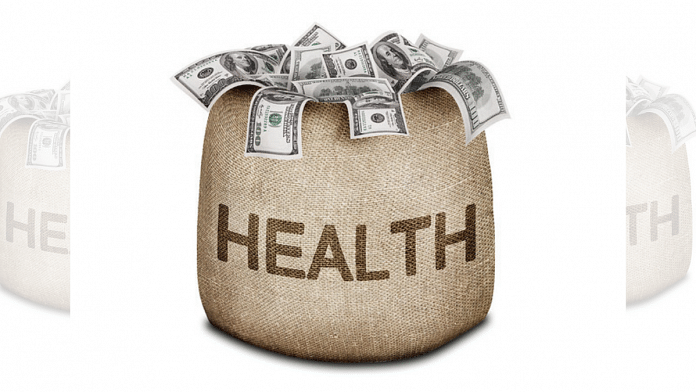- Investment into global health has surged amidst COVID-19.
- Many investor tools, however, aren’t suited for investment decision-making in the health sector.
- The Impact Investment Matrix is a tailored framework that can adequately guide decision-making for investments in health.
According to the Institute for Health Metrics and Evaluation, development assistance for global health has more than tripled since 2000. Investors—ranging from traditional development donors to commercial impact investors—contributed an estimated $54,8 billion into the global health sector in 2020. This represents a nearly 36% increase from the year before.
The influx of investment, though, means more complexity for investors when deciding how to deploy funds. Decision-making models for guiding investments have not kept pace with these rapid changes. This has led to suboptimal outcomes in many cases.
To support global health goals, along with renewed efforts toward decolonizing global health care, investors should follow the money. Focusing upstream on improving how investment decisions are made, can aid decision-making processes to be more impactful and transparent. Decision hygiene, the practice of using disciplined procedures to evaluate options, can reduce bias, promote input from historically underrepresented populations, and correct power imbalances.
In the absence of tailored tools for the global health sector, some have turned to industry tools. These are well-known and tested, but there are key differences between the two sectors which makes these tools challenging to apply to global health. Industry investment frameworks have a strong focus on Return on Investment (ROI) and market share. In global health, though, collaboration is crucial, and so we often find these investment frameworks insufficient in approach or scope for the sector.
The need for global health-specific investment frameworks
Any tool or framework that seeks to guide investments in global health should address the unique needs of this sector. To help fill this void, we’ve developed a tailored framework, called the Impact Investment Matrix (IIM). The IIM guides early-stage decision-making in global health. We’ve designed this framework to enable users to answer three essential questions:
– What is the universe of investment options?
– Is my organization the best suited to make or implement a particular investment?
– Are internal and external partners aligned on an investment’s expected impact?
What is the universe of investment options?
Disciplined decision-making starts with a firm understanding of the options on the table. As Andrew Likierman said, “When all the options can be debated, the judgment is more likely to be right.”
The six segments of the IIM offer a home for all investment options, even ones we may have prematurely ruled out. Having a framework that increases the visibility of investment options – and promotion of dialogue around these options – is a critical step in decolonizing our sector. Encouraging inclusion at the start of the process, helps limit preconceived notions or biases that precludes certain options from consideration. This is particularly valuable in global health, where data and evidence are not always abundant, and assumptions or personal perceptions often fill the gaps.
Is my organization the best suited to make or implement a particular investment?
To optimize impact, global health stakeholders must ensure their efforts complement others. This means finding one’s lane from the perspective of tolerable risk, reward, and cost. Based on this, organizations may decide to focus their investments within particular segments of the IIM framework or establish partnerships to pursue investments in other segments.
For example, in 2018, a global health care company wanted to support malaria elimination efforts in India, but they had a modest budget and short implementation timelines. With PATH’s support, various public and private stakeholders were convened to organize, segment, and prioritize the universe of investment opportunities.
Through these conversations, stakeholders identified several impactful investment opportunities, with two falling into the immediate opportunity segment. The IIM exercise supported the company’s internal business case for investment and enabled implementation of both opportunities within a year.
Are internal and external partners aligned on an investment’s expected impact?
Differing expectations concerning projected impact and necessary resources can be obstacles to an investment’s successful implementation. Tools like the IIM can help mitigate misalignment by giving investors and investees a common tool that considers a portfolio of options early on in the decision-making process.
When evaluating trade-offs upstream in the decision-making process, understanding the relationship between impact and cost enables disciplined prioritization and down-selection. With finite budgets, robust and transparent conversations around opportunity costs are imperative. While these conversations aren’t routine in global health decision-making, tools like the IIM can foster inclusive conversations, solicit diverse perspectives, and align expectations.
Moving toward a more transparent and impactful future in global health investment
Covid-19 has highlighted the complexities of investing in global health, as well as the scale that is possible. Early-stage investment decisions can have far reaching impacts on the trajectory of global health initiatives. These decisions are too important to be left to investment frameworks that were never intended for the complexities of the global health sector.
The IIM is a starting point in exploring what decision hygiene could look like in global health. It can catalyze global health organizations to revisit their decision-making processes and assess opportunities for improved transparency, collaboration, and inclusion. We see the IIM tool as a spark for further discussions on the value of disciplined decision-making and its ability to guide more impact in the global health sector.
This article was originally published in the World Economic Forum.
Also read: Indian govt won’t spend enough on mental healthcare. Impact investing could be the solution



